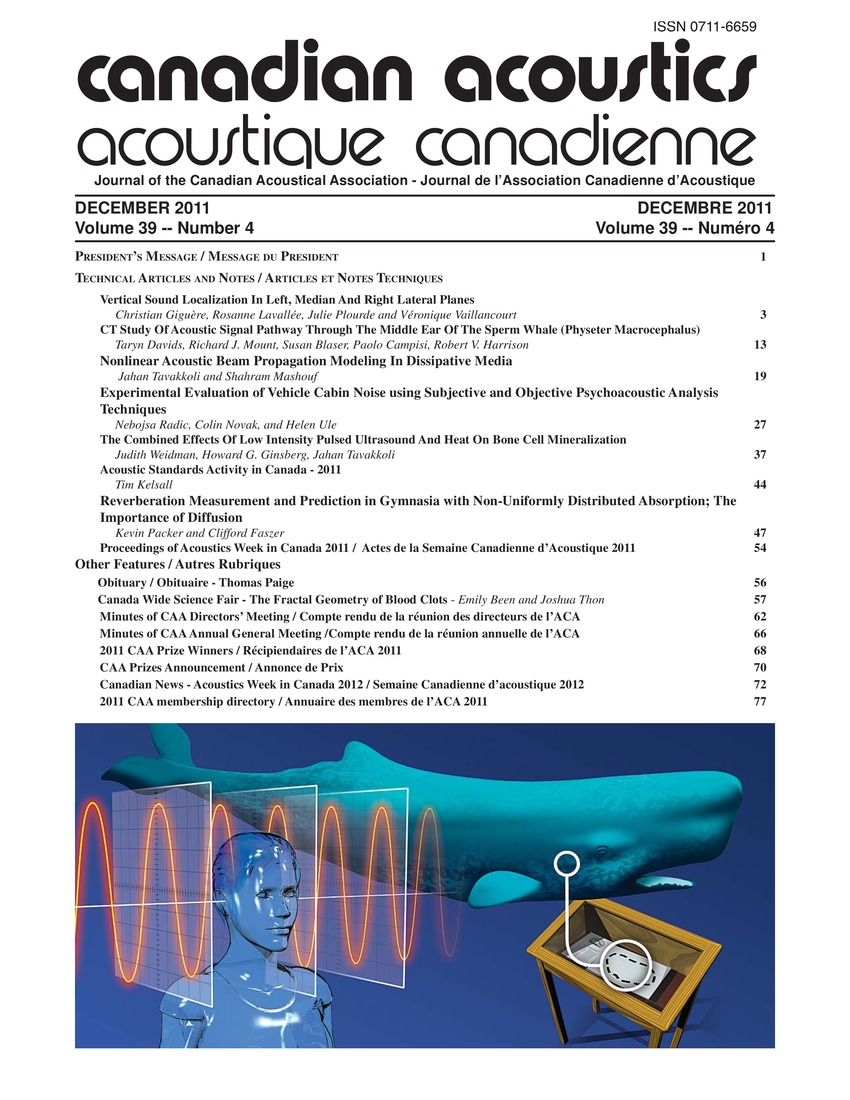CT study of acoustic signal pathway through the middle ear of the sperm whale (Physeter macrocephalus)
Keywords:
Computerized tomography, Conservation, Mammals, Acoustic environment, Acoustic signals, Bony structures, Dry specimens, Endangered species, High resolution computer tomographies, Inner ear structures, Marine mammals, Middle ears, Sperm WhalesAbstract
The ability of marine mammals to adapt to an underwater acoustic environment is a remarkable evolutionary achievement. Of particular interest is how the middle and inner ear structures are modified relative to those of terrestrial mammals. For the large whale species there are very few anatomical descriptions of the ear, in part because of the large and dense bony structures involved. Because the sperm whale (Physeter macrocephalus) is listed as an endangered species, legal fresh specimens are rare. However old dry specimens can be found and we are able to present here a study of the periotic-tympanic bone complex of the sperm whale, using high resolution computer tomography (CT) imaging. We discuss the marine adaptations of the middle and inner ear structures.Additional Files
Published
How to Cite
Issue
Section
License
Author Licensing Addendum
This Licensing Addendum ("Addendum") is entered into between the undersigned Author(s) and Canadian Acoustics journal published by the Canadian Acoustical Association (hereinafter referred to as the "Publisher"). The Author(s) and the Publisher agree as follows:
-
Retained Rights: The Author(s) retain(s) the following rights:
- The right to reproduce, distribute, and publicly display the Work on the Author's personal website or the website of the Author's institution.
- The right to use the Work in the Author's teaching activities and presentations.
- The right to include the Work in a compilation for the Author's personal use, not for sale.
-
Grant of License: The Author(s) grant(s) to the Publisher a worldwide exclusive license to publish, reproduce, distribute, and display the Work in Canadian Acoustics and any other formats and media deemed appropriate by the Publisher.
-
Attribution: The Publisher agrees to include proper attribution to the Author(s) in all publications and reproductions of the Work.
-
No Conflict: This Addendum is intended to be in harmony with, and not in conflict with, the terms and conditions of the original agreement entered into between the Author(s) and the Publisher.
-
Copyright Clause: Copyright on articles is held by the Author(s). The corresponding Author has the right to grant on behalf of all Authors and does grant on behalf of all Authors, a worldwide exclusive license to the Publisher and its licensees in perpetuity, in all forms, formats, and media (whether known now or created in the future), including but not limited to the rights to publish, reproduce, distribute, display, store, translate, create adaptations, reprints, include within collections, and create summaries, extracts, and/or abstracts of the Contribution.


